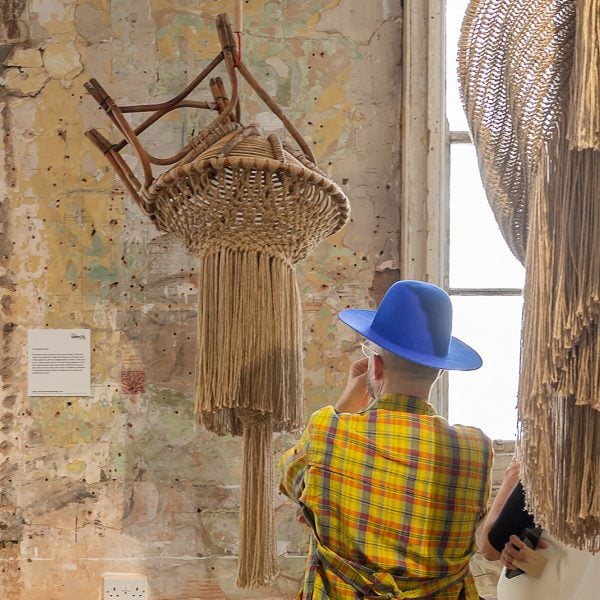Neurodiversity meets found objects, crochet and weaving in the Interwoven project, created by British artist and designer Christopher Kelly to explore his experiences of living with neurological differences.
Kelly’s Interwoven sculptures – which are sometimes monumental in scale – are made using textile crafting techniques that fuse broken furniture and other objects into elaborate, flowing jute forms.
He intends the works to reflect on what it is like to live with neurodivergence – an umbrella term for conditions such as autism and dyslexia that make people’s brains function differently from what is typically considered “normal”.
Kelly was diagnosed with ADHD (attention deficit hyperactivity disorder) as an adult and told Dezeen that he began to develop the Interwoven sculptures while trying to understand what that diagnosis meant for him.
At the same time, he contracted long Covid and took up crochet to help him cope with the long periods of immobility that brought.
“I needed something to help manage my hyperactivity, particularly my hand moving or my feet moving when I wasn’t able to move the rest of my body,” said Kelly.
“As my understanding grew, I realised that I wanted to work in a larger form, so working with large hooks and a more robust material rather than a traditional yarn.”
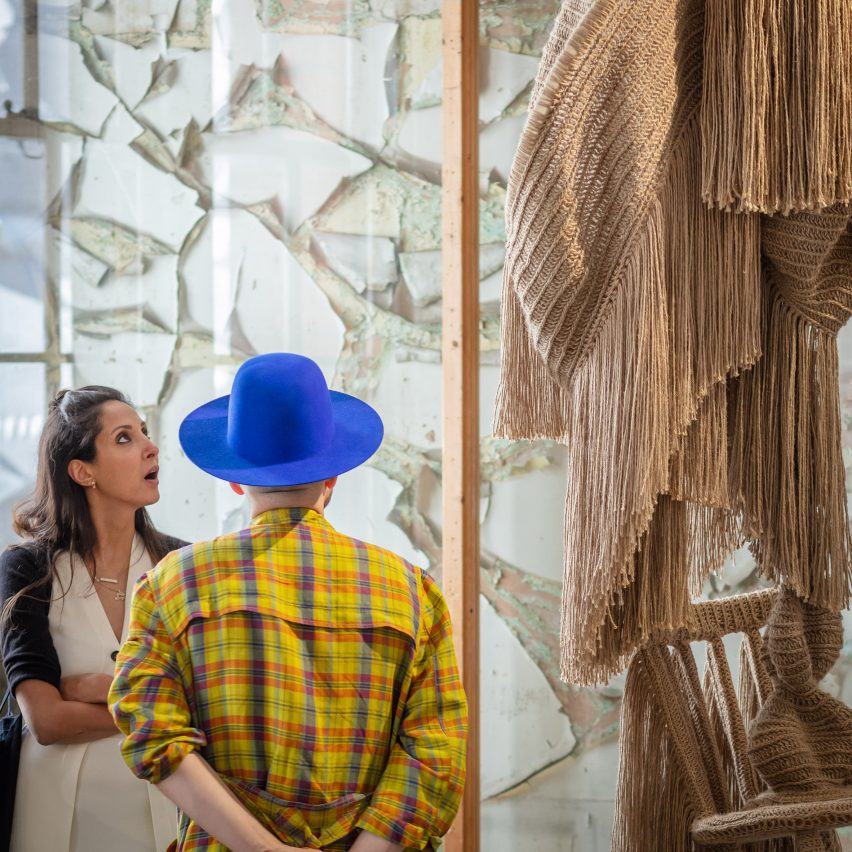
He made the first Interwoven sculpture working with his husband’s garden twine and developed a practice of working quite instinctively to develop the forms using crochet, macramé and weaving.
These early sculptures make up Interwoven Chapter No 1, which Kelly subtitled Masking. They feature forms that morph in shape to represent the practice of “masking” that neurodivergent people commonly do to try to hide their difference.
For the recently completed second chapter, subtitled Dis/Functional and shown at the Future Icons Selects crafts showcase in London, Kelly added an element of “sensory overload”.
This is another common experience among neurodivergent people that refers to overwhelm or stress triggered by excessive or uncomfortable stimuli.
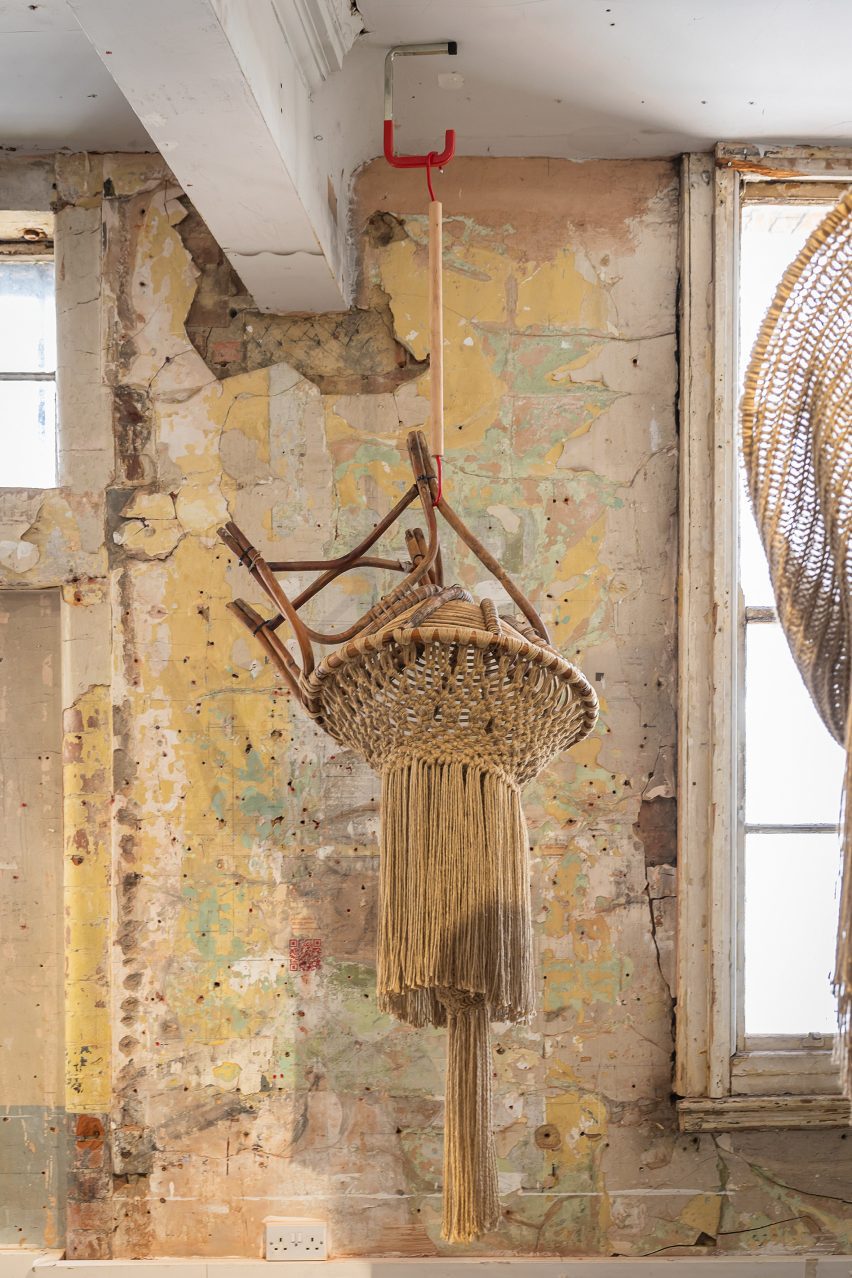
The pieces hang from the ceiling and are made of multiple connected forms, rather than being a singular object.
“In chapter two, the scale was something I embraced,” Kelly told Dezeen. “I wanted to communicate the feeling of overwhelm I experience as a neurodiverse person.”
“This used to come in the form of complete exhaustion. I would be out of action for a week or more, just completely depleted – this does still happen but not to such an extreme.”
Starting with partly broken furniture and objects that he found abandoned on the street or sold in charity shops, Kelly tried to envelope them in his textile forms in a way that both corrected and celebrated their “dysfunction”.
“The crochet would usurp their function or transform their function into one that’s more beautiful,” he said.
In the largest piece in the series, Dis/functional No 1, a broken basket peeks out of the top of a cascade of crocheted forms that eventually connect to a chair that hangs about a metre from the ground.
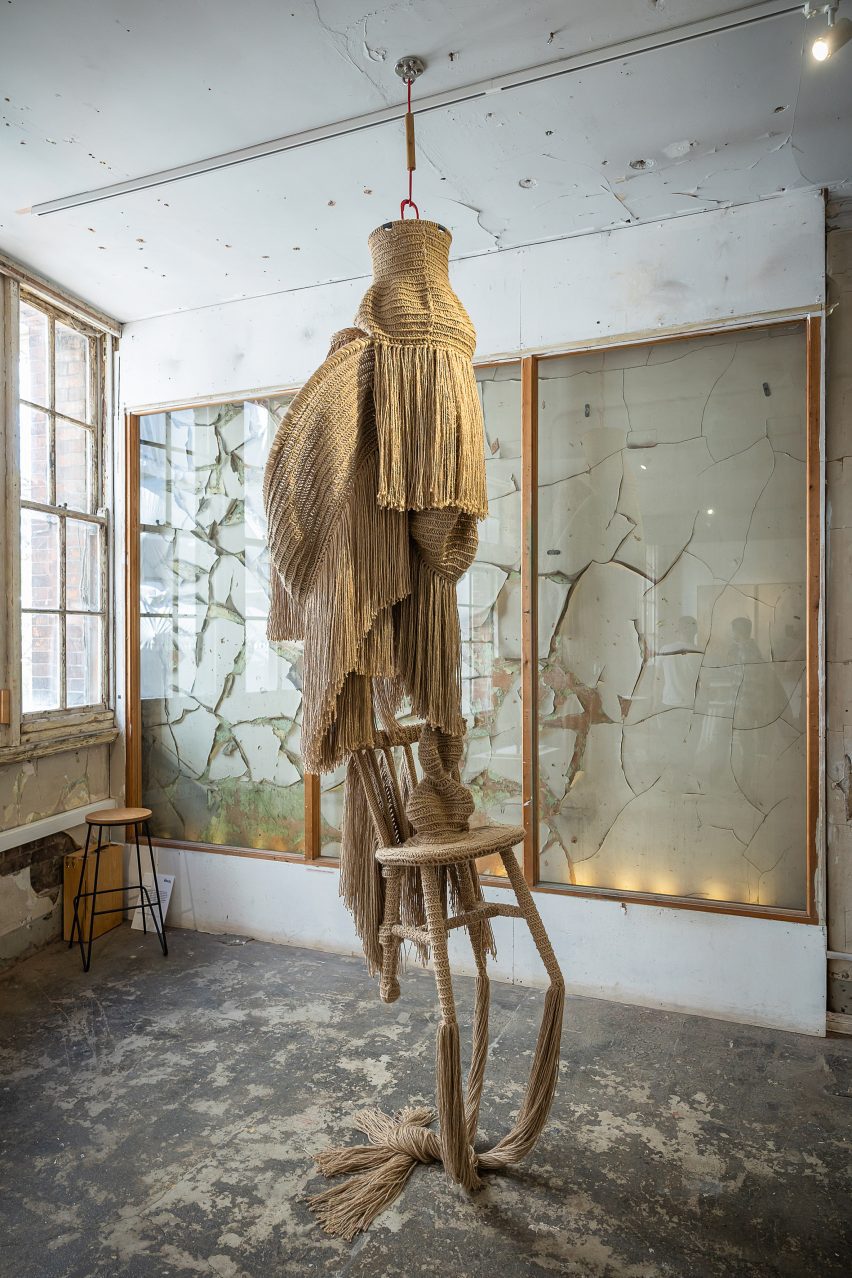
Tassels feature heavily in the piece, including draping down from three of the chair’s legs. The fourth – a broken leg – is more thickly corseted in crochet.
A fashion design graduate who used to run his own label Theatre de la Mode, Kelly now works as an art director, set designer, stylist and prop maker as well as teaching at art and design school Central St Martin’s.
He said that his ADHD – as well as connected experiences around rejection sensitivity disorder, anxiety and depression – had affected him throughout his entire life, making both schooling and nine-to-five workdays difficult.
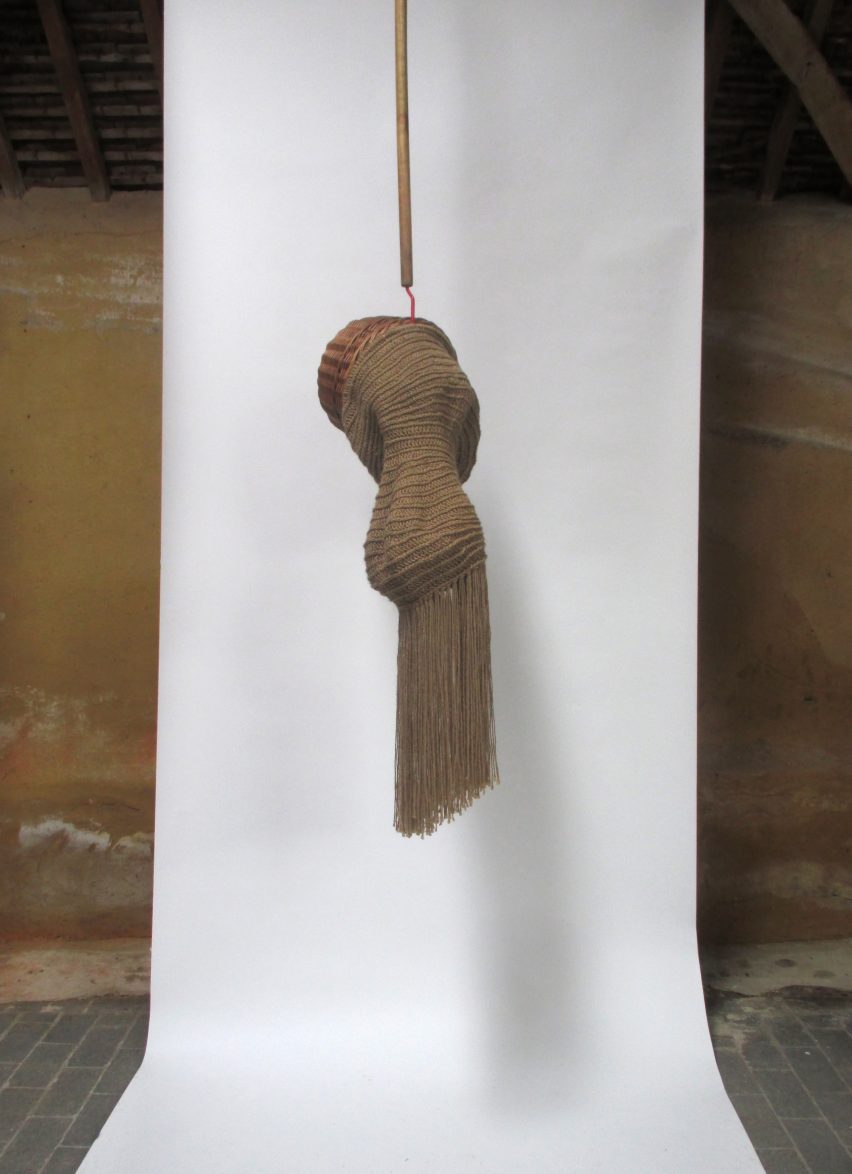
However, as well as symbolising his journey with neurodivergence, the Interwoven pieces provide a process for managing his day-to-day challenges, as the artist now carries his crochet nearly everywhere with him.
“I realised that the two things were combined, that the making was a meditative process for me,” said Kelly. “It was an ability for me to harness my hyperactivity and allow for focus.”
“Part of my neurodiversity is that I can be very overwhelmed by multiple stimuli and equally understimulated, so there’s a kind of constant contradiction and the crochet enables me to manage that.”
Other recent textile projects include Barbican’s Unravel exhibition and a pavilion made from unravelled silk threads at Dubai Design Week.
Interwoven Chapter No.2: Dis/Functional was on display at the Future Icons Selects exhibition from 16 to 19 May during London Craft Week. For more events, exhibitions and talks in architecture and design visit Dezeen Events Guide.

